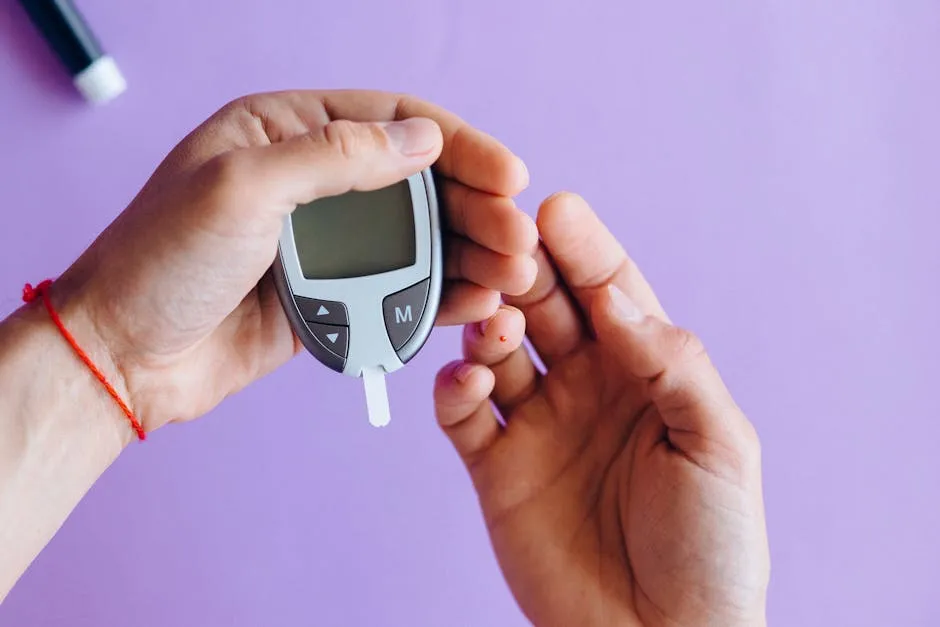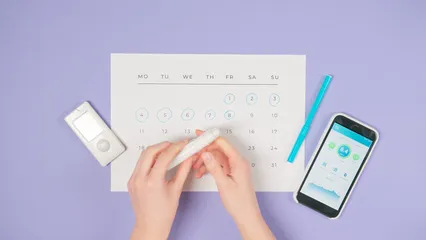Introduction
Monitoring blood sugar levels is vital for health. It helps prevent complications from diabetes and other conditions. Blood sugar charts play a key role in managing these levels effectively. They provide a visual guide to track fluctuations over time. This article is for individuals with diabetes, healthcare providers, and health-conscious readers seeking to understand blood sugar management better.
Speaking of monitoring, if you’re looking for a reliable way to keep tabs on your glucose levels, consider investing in a Blood Sugar Monitor. With its easy-to-read display and accuracy, you can wave goodbye to the guesswork and say hello to informed decisions!
Summary and Overview
Blood sugar charts are essential tools for monitoring glucose levels. They help individuals understand their blood sugar patterns and set goals. Different types of measurements exist: fasting, postprandial (after meals), and random. Normal ranges for blood sugar vary based on age, health status, and individual circumstances. Healthcare providers often set personalized targets for each individual to optimize their health outcomes. For a detailed understanding, refer to the normal blood sugar levels chart.
If you’re looking to take your diabetes management to the next level, a Diabetes Cookbook can be a game changer. Packed with delicious recipes tailored for blood sugar control, it makes healthy eating enjoyable rather than a chore!

Understanding blood sugar levels is crucial for effective management. normal blood sugar levels chart can provide valuable insights.
What is a Blood Sugar Chart?
A blood sugar chart is a visual representation of glucose levels over time. It helps track and manage blood sugar levels effectively. These charts can be in various formats, such as tables or graphs. Key metrics displayed include measurements in mg/dL and mmol/L, along with HbA1c levels. HbA1c tests show average blood sugar levels over the past two to three months, providing insight into long-term management. Understanding these charts is crucial for effective diabetes care.
And if you’re serious about keeping your readings in check, don’t forget to grab Glucose Test Strips. They’re essential for accurate glucose monitoring and can help you catch those pesky spikes in time!

Key Metrics Explained
Fasting Blood Sugar Levels
Fasting blood sugar measures glucose after not eating for at least eight hours. Normal levels typically range from 70 to 100 mg/dL (3.9 to 5.5 mmol/L). Higher readings, such as 100 to 125 mg/dL, indicate prediabetes. A level of 126 mg/dL or more usually signals diabetes. It’s essential to monitor these levels regularly to maintain good health.
For those who travel or are always on the go, an Insulin Cooler Travel Case can be a lifesaver. Keeping your insulin at the right temperature is crucial for its effectiveness, and this case makes it easy!

Postprandial Blood Sugar Levels
Postprandial blood sugar is measured two hours after eating. For individuals without diabetes, a normal level is generally below 140 mg/dL (7.8 mmol/L). For those with diabetes, target levels often range from 180 mg/dL (10 mmol/L) or lower, depending on individual guidelines. Monitoring after meals helps in understanding how food affects blood sugar.
HbA1c
The HbA1c test shows average blood sugar levels over the past two to three months. This test is crucial for long-term diabetes management. A normal HbA1c level is below 5.7%. Levels between 5.7% and 6.4% indicate prediabetes, while 6.5% or higher typically suggests diabetes. Regular HbA1c testing helps assess overall glucose control and informs treatment decisions.

Normal Blood Sugar Levels by Age and Health Status
Children
Normal blood sugar levels for children vary by age. For those under six, fasting levels should be between 80-180 mg/dL. For children aged 6-12, fasting levels should ideally be 80-180 mg/dL. Teens should maintain levels of 70-150 mg/dL when fasting. These ranges help ensure healthy growth and development.
Adults
For adults, fasting blood sugar levels should be under 100 mg/dL. Before meals, target levels range from 80 to 130 mg/dL. After meals, levels should ideally be below 180 mg/dL. These guidelines help prevent complications associated with diabetes and support overall health.

Seniors
Seniors may have slightly higher target levels. Fasting blood sugar should be less than 100 mg/dL, while before meals, levels should range from 80 to 130 mg/dL. After meals, a target of less than 180 mg/dL is typical. Individual health conditions may require adjustments to these targets.
Special Cases
Pregnant Women
Pregnant women face unique challenges regarding blood sugar. Normal fasting levels should be between 70-89 mg/dL. After meals, levels should be under 140 mg/dL one hour later and below 120 mg/dL two hours later. Monitoring is essential to minimize risks to both mother and baby.

Individuals with Diabetes
People with diabetes need tailored targets. Before meals, levels should be 80-130 mg/dL, and two hours after eating, they should be below 180 mg/dL. Personalizing these targets involves working closely with healthcare providers to optimize diabetes management. Regular monitoring helps adjust these targets as needed.

Factors Influencing Blood Sugar Levels
Understanding what affects your blood sugar levels can help you manage your health better. Several key factors play a role in these fluctuations.
Diet
What you eat significantly impacts blood sugar. Carbohydrates raise blood sugar more than proteins or fats. Eating large meals or high-carb foods can spike levels quickly. Meal timing also matters; consistent eating patterns help maintain stable glucose levels.
If you’re looking for healthy snacks that won’t send your blood sugar soaring, check out a Healthy Snack Box. With a variety of options, you can satisfy those cravings without the guilt!

Physical Activity
Exercise is a powerful tool for managing blood sugar. Physical activity helps your muscles use glucose effectively. Regular workouts can improve insulin sensitivity. This means your body needs less insulin to lower blood sugar levels. Aim for at least 150 minutes of moderate exercise weekly.
To help you stay motivated, a Fitness Tracker can be a great addition to your routine. Tracking your steps and workouts makes it easier to stay on top of your fitness goals!

Medications
Insulin and other diabetes medications directly affect blood sugar. Insulin helps move glucose from the bloodstream into cells for energy. Other medications might help your body use insulin more effectively or produce additional insulin. Always follow your healthcare provider’s advice regarding medication use.
Stress
Stress can impact blood sugar levels, too. When you’re stressed, your body releases hormones like cortisol and adrenaline. These hormones can raise blood sugar levels. Managing stress through relaxation techniques and mindfulness can help maintain balance.

Recognizing High and Low Blood Sugar
Being aware of your body’s signals is crucial. Recognizing the signs of both high and low blood sugar can prevent serious complications.
Hyperglycemia
Hyperglycemia, or high blood sugar, may cause symptoms like increased thirst, frequent urination, fatigue, and blurry vision. If left unchecked, it can lead to severe health issues.
Hypoglycemia
On the other hand, hypoglycemia, or low blood sugar, can trigger symptoms such as shakiness, sweating, confusion, and rapid heartbeat. Severe cases can lead to unconsciousness or seizures.

Immediate Management
Immediate management of high blood sugar involves drinking water, exercising, or taking your prescribed medication. For low blood sugar, consuming fast-acting carbohydrates, like Glucose Tablets or juice, can quickly raise levels. If symptoms persist or worsen, seek medical help.

Long-Term Implications of Uncontrolled Blood Sugar
Consistently high or low blood sugar levels can lead to serious complications. High blood sugar can damage blood vessels, leading to heart disease, kidney failure, and neuropathy. Low blood sugar can cause cognitive issues, seizures, or fainting.
How to Use a Blood Sugar Chart Effectively
Using a blood sugar chart can significantly enhance your diabetes management. Here are some best practices to follow.
First, record your readings consistently. Aim to test your blood sugar at the same times each day. Morning, before meals, and two hours after meals are ideal. Keeping a routine helps establish patterns.
Next, note the conditions during each test. Were you stressed? Did you exercise? What did you eat? This context allows for better interpretation of your data. Small changes can lead to significant results.

Look for trends over time. Are your levels consistently high or low? Identifying these patterns can help you and your healthcare provider make informed decisions about your treatment. For instance, if you notice higher levels after certain meals, it may be time to adjust your diet.
Lastly, consider using mobile apps to track your data. Many apps allow you to log readings and generate reports. This can simplify discussions with your healthcare team. You might also want to pair your tracking with a Diabetes Management Journal to document your progress effectively.

FAQs
What are the normal blood sugar levels for adults?
For adults without diabetes, normal fasting blood sugar levels are typically between 70 to 100 mg/dL. Post-meal levels should ideally be below 140 mg/dL.
Why is HbA1c important in diabetes management?
HbA1c measures average blood sugar levels over the past two to three months. It helps assess long-term glucose control and informs treatment adjustments. Keeping HbA1c below 7% is often a common target for many individuals with diabetes.
How often should I check my blood sugar levels?
The frequency of blood sugar monitoring varies based on your diabetes type and treatment. If you have type 1 diabetes, frequent checks are essential. Aim for testing before meals, after meals, and at bedtime. This helps you understand how food and activity affect your levels. For those with type 2 diabetes, the approach may differ. If you take insulin, monitor your levels similarly to type 1. If you manage diabetes through lifestyle changes, testing once or twice a day may suffice. Always consult your healthcare provider for personalized recommendations tailored to your situation.
What should I do if my blood sugar is too high or too low?
If your blood sugar is too high, drink plenty of water. Staying hydrated can help lower levels. Engage in light physical activity if you’re feeling well. This can help your body use glucose more effectively. For low blood sugar, act quickly. Consume fast-acting carbohydrates like glucose tablets, juice, or candy. After 15 minutes, recheck your blood sugar. If it remains low, repeat the process. If symptoms persist or worsen, seek medical assistance immediately.
Can blood sugar levels vary throughout the day?
Yes, blood sugar levels can fluctuate throughout the day. It’s normal for levels to rise after meals and drop before eating again. Factors like food intake, physical activity, stress, and illness contribute to these changes. For example, high-carb meals can lead to spikes in glucose levels, while regular exercise typically lowers them. Understanding these fluctuations helps you manage your diabetes more effectively. Regular monitoring allows you to see patterns and adjust your diet or medication accordingly.
How can diet affect blood sugar levels?
Diet plays a significant role in blood sugar control. Carbohydrates are the primary culprits. They convert to glucose quickly, impacting your blood sugar. Focus on complex carbs, such as whole grains, fruits, and vegetables, which digest more slowly. Incorporate fiber into your meals as well. Fiber helps slow the absorption of sugar, leading to steadier blood sugar levels. Meal timing is also crucial. Eating at regular intervals can prevent sudden spikes and drops in glucose. Aim for balanced meals that include protein and healthy fats alongside carbohydrates.
What lifestyle changes can help maintain stable blood sugar levels?
Several lifestyle changes can help keep your blood sugar in check. First, maintain a balanced diet rich in whole foods. Prioritize fruits, vegetables, lean proteins, and healthy fats while limiting processed foods and sugars. Regular physical activity is another key factor. Aim for at least 150 minutes of moderate exercise each week. This can include walking, cycling, or swimming. Additionally, managing stress is vital. Stress can elevate blood sugar levels, so consider relaxation techniques like yoga or meditation. Lastly, ensure regular check-ups with your healthcare provider. They can help you set and adjust your targets based on your progress and needs. Remember, small changes can lead to significant improvements in your overall health and well-being.
Please let us know what you think about our content by leaving a comment down below!
Thank you for reading till here 🙂
All images from Pexels




